Transparent Ferroelectric Capacitors on Glass
Abstract
:1. Introduction
2. Experimental Section
3. Results
4. Conclusions
Acknowledgments
Author Contributions
Conflicts of Interest
References
- Stoppa, M.; Chiolerio, A. Wearable Electronics and Smart Textiles: A Critical Review. Sensors 2014, 14, 11957–11992. [Google Scholar] [CrossRef] [PubMed]
- Fortunato, E.; Barquinha, P.; Martins, R. Oxide semiconductor thin-film transistors: A review of recent advances. Adv. Mater. 2012, 24, 2945–2986. [Google Scholar] [CrossRef] [PubMed]
- Martins, R.; Fortunato, E.; Nunes, P.; Ferreira, I.; Marques, A.; Bender, M.; Katsarakis, N.; Cimalla, V.; Kiriakidis, G. Zinc oxide as an ozone sensor. J. Appl. Phys. 2004, 96, 1398–1408. [Google Scholar] [CrossRef]
- Fortunato, E.; Ginley, D.; Hosono, H.; Paine, D.C. Transparent conducting oxides for photovoltaics. MRS Bull. 2007, 32, 242–247. [Google Scholar] [CrossRef]
- Bernard, F.; Gorisse, M.; Casset, F.; Chappaz, C.; Basrour, S. Design, Fabrication and Characterization of a Tactile Display Based on AlN Transducers. Procedia Eng. 2014, 87, 1310–1313. [Google Scholar] [CrossRef]
- Sette, D.; Girod, S.; Godard, N.; Adjeroud, N.; Chemin, J.B.; Leturcq, R.; Defay, E. Transparent piezoelectric transducers for large area ultrasonic actuators. In Proceedings of the 30th IEEE International Conference on Micro Electro Mechanical Systems (MEMS), Las Vegas, NV, USA, 22–26 January 2017; pp. 793–796. [Google Scholar]
- Cotroneo, V.; Davis, W.N.; Marquez, V.; Reid, P.B.; Schwartz, D.A.; Johnson-Wilke, R.L.; Trolier-McKinstry, S.E.; Wilke, R.H. Adjustable grazing incidence X-ray optics based on thin PZT films. In Proceedings of the International Society for Optics and Photonics (SPIE), San Diego, CA, USA, 12–16 August 2012; p. 850309. [Google Scholar]
- Pérez-Tomás, A.; Lira-Cantú, M.; Catalan, G. Above-Bandgap Photovoltages in Antiferroelectrics. Adv. Mater. 2016, 28, 9644–9647. [Google Scholar] [CrossRef] [PubMed]
- Khodorov, A.; Gomes, M.J. Preparation and optical characterization of lanthanum modified lead zirconate titanate thin films on indium-doped tin oxide-coated glass substrate. Thin Solid Films 2006, 515, 1782–1787. [Google Scholar] [CrossRef]
- Ohno, T.; Fujimoto, M.; Suzuki, H. Preparation and characterization of PZT thin films on ITO/glass substrate by CSD. Key Eng. Mater. 2006, 301, 41–44. [Google Scholar] [CrossRef]
- Liu, Z.; Liu, Q.; Liu, H.; Yao, K. Electrical properties of undoped PZT and Co-doped PCZT films deposited on ITO/glass substrates by a sol–gel method. Phys. Stat. Sol. A 2005, 202, 1834–1841. [Google Scholar] [CrossRef]
- Bayraktar, M.; Chopra, A.; Bijkerk, F.; Rijnders, G. Nanosheet controlled epitaxial growth of PbZr0.52Ti0.48O3 thin films on glass substrates. Appl. Phys. Lett. 2014, 105, 132904. [Google Scholar] [CrossRef]
- Terada, K.; Suzuki, T.; Kanno, I.; Kotera, H. Hidetoshi Kotera, Fabrication of single crystal PZT thin films on glass substrates. Vacuum 2007, 81, 571–578. [Google Scholar] [CrossRef]
- Uprety, K.K.; Ocola, L.E.; Auciello, O. Growth and characterization of transparent Pb (Zi, Ti)O3 capacitor on glass substrate. J. Appl. Phys. 2007, 102, 084107. [Google Scholar] [CrossRef]
- Zhang, Q.Q.; Gross, S.J.; Tadigadapa, S.; Jackson, T.N.; Djuth, F.T.; Trolier-McKinstry, S. Lead zirconate titanate films for d33 mode cantilever actuators. Sens. Actuators A 2003, 105, 91–97. [Google Scholar] [CrossRef]
- Nigon, R.; Raeder, T.M.; Muralt, P. Characterization methodology for lead zirconate titanate thin films with interdigitated electrode structures. J. Appl. Phys. 2017, 121, 204101. [Google Scholar] [CrossRef]
- Chidambaram, N.; Balma, D.; Nigon, R.; Mazzalai, A.; Matloub, R.; Sandu, C.S.; Muralt, P. Converse mode piezoelectric coefficient for lead zirconate titanate thin film with interdigitated electrode. J. Micromech. Microeng. 2015, 25, 045016. [Google Scholar] [CrossRef]
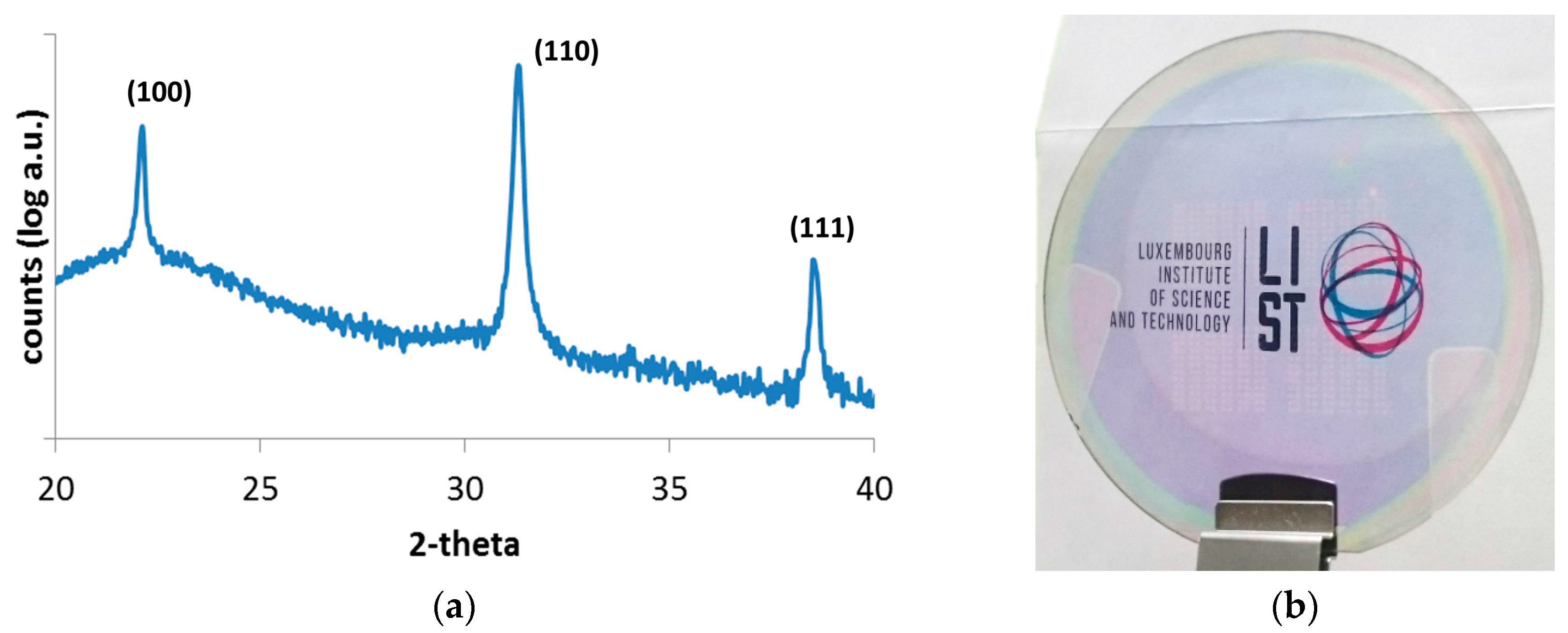
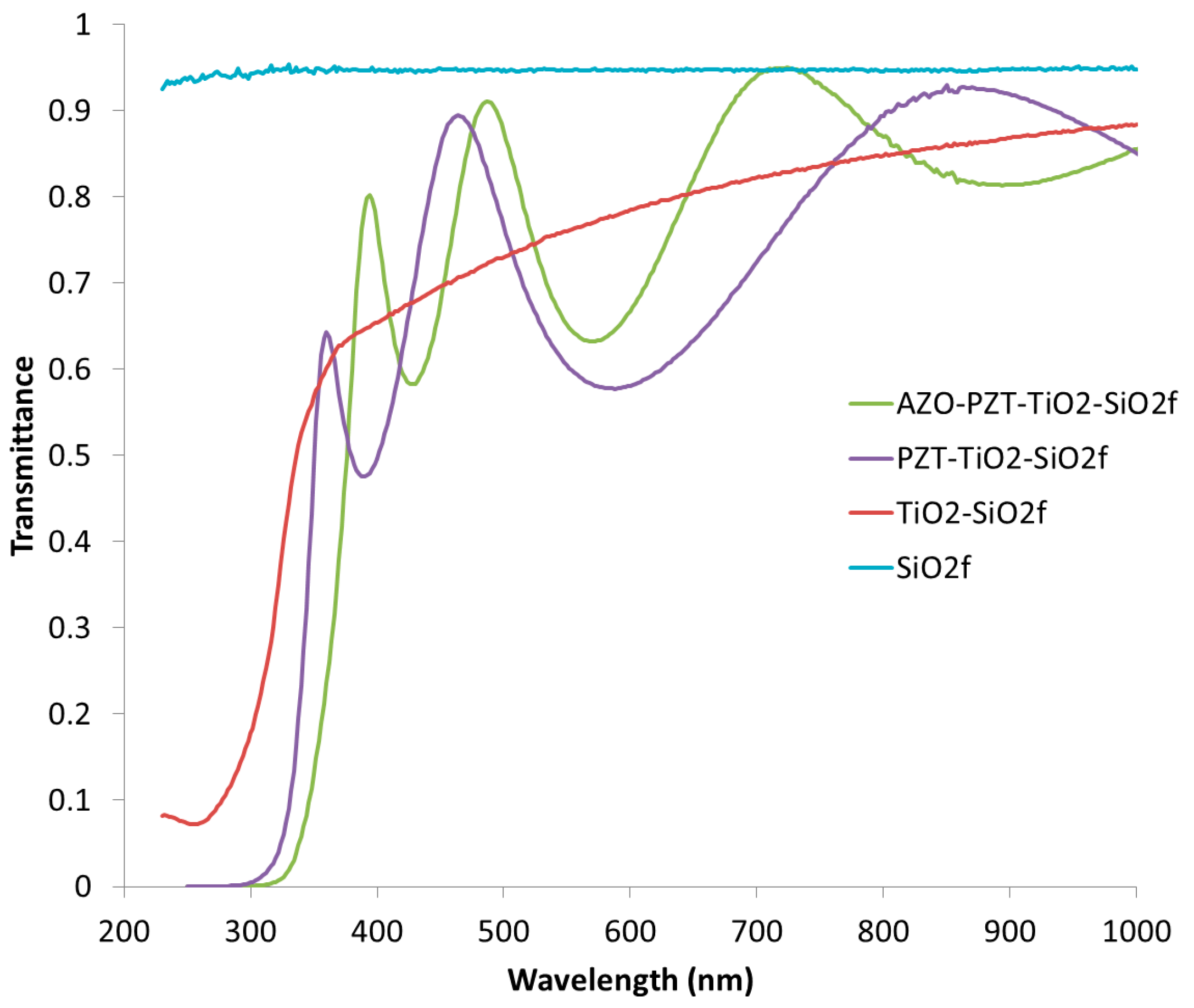
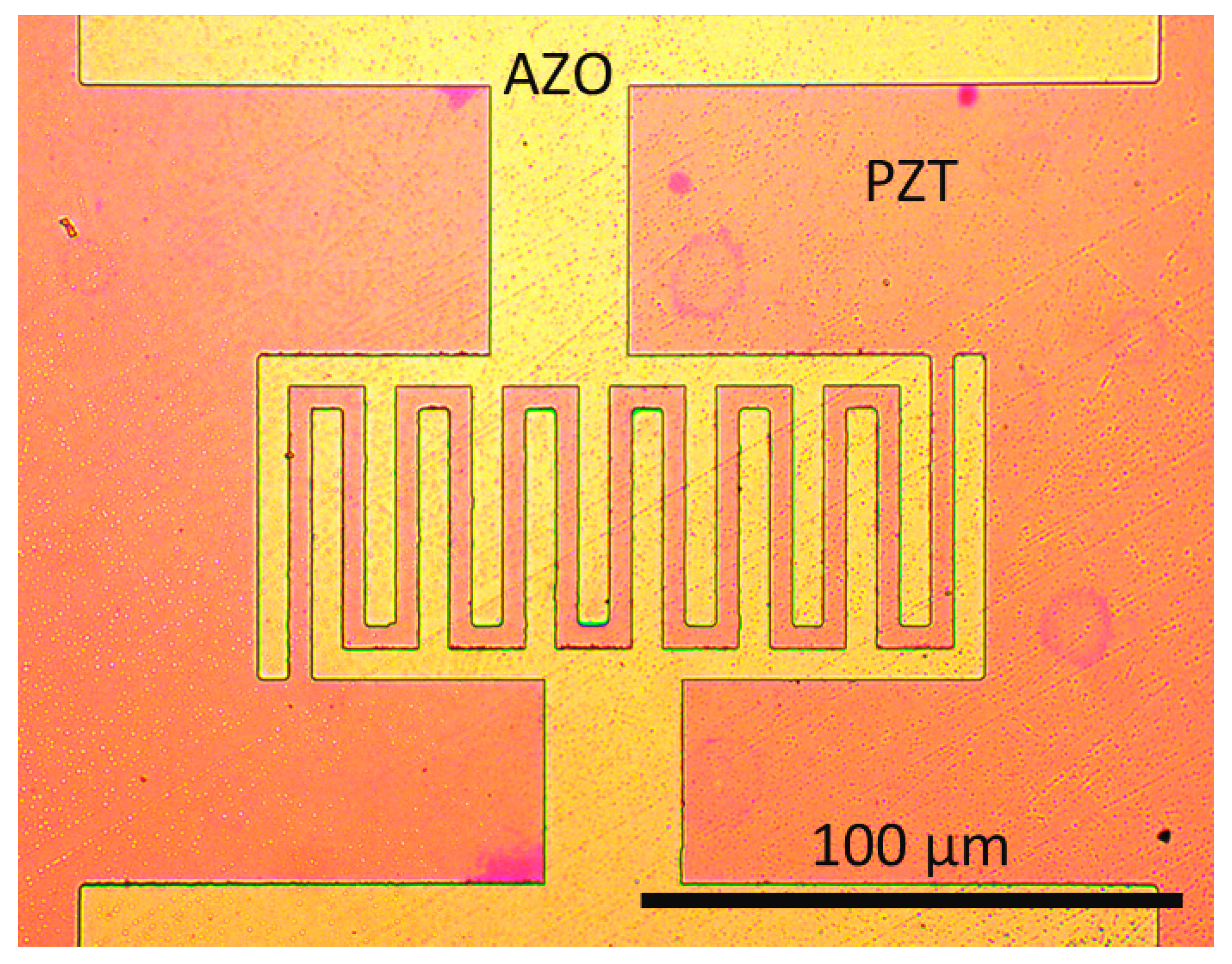
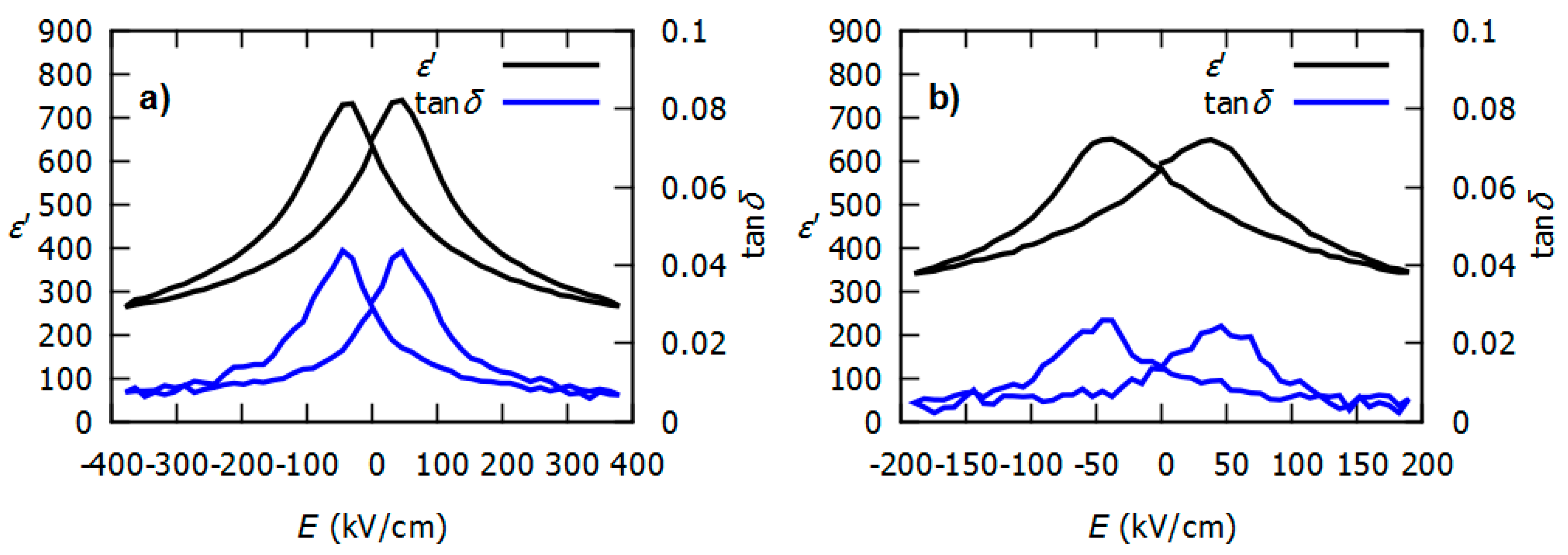
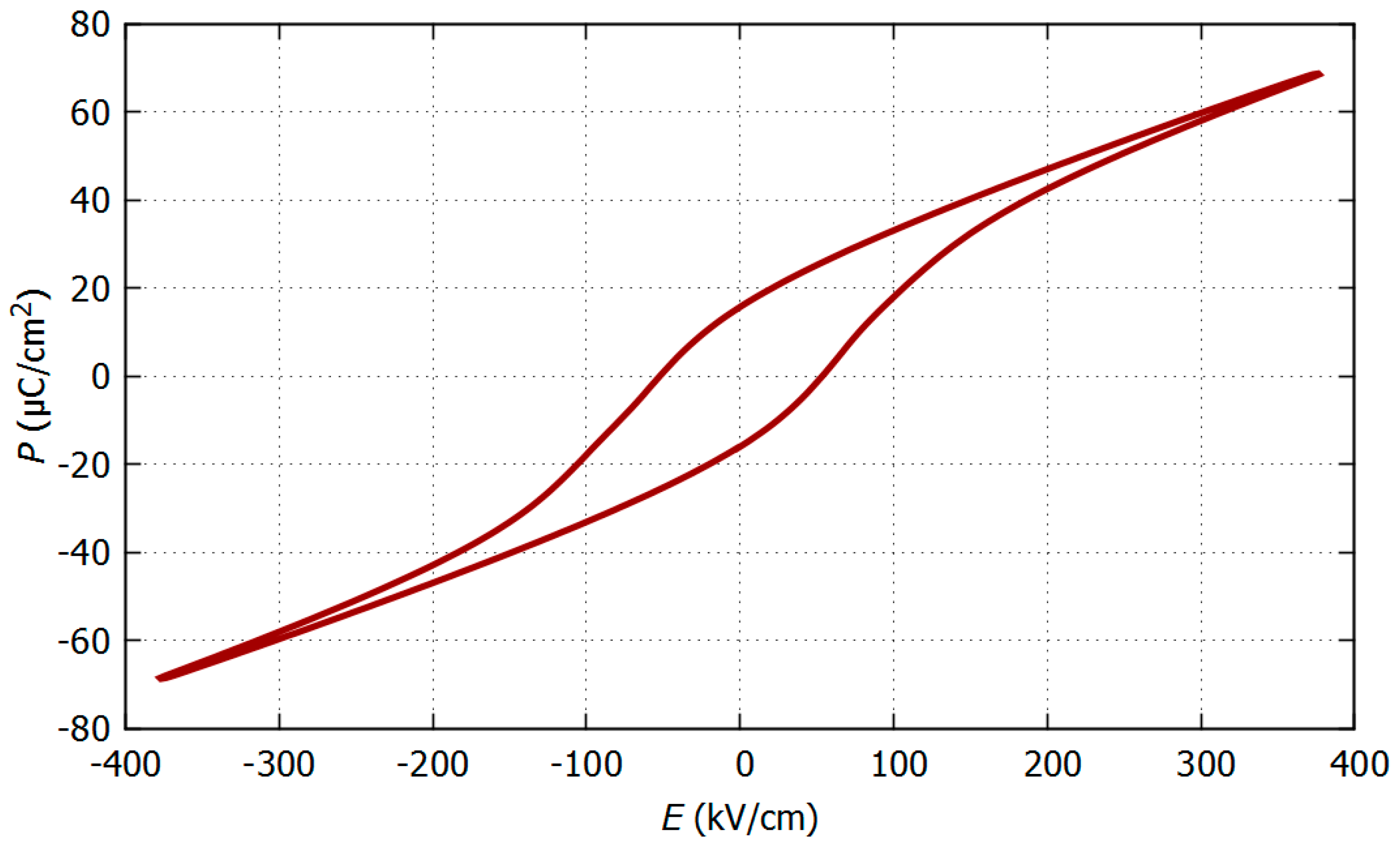
© 2017 by the authors. Licensee MDPI, Basel, Switzerland. This article is an open access article distributed under the terms and conditions of the Creative Commons Attribution (CC BY) license (http://creativecommons.org/licenses/by/4.0/).
Share and Cite
Sette, D.; Girod, S.; Leturcq, R.; Glinsek, S.; Defay, E. Transparent Ferroelectric Capacitors on Glass. Micromachines 2017, 8, 313. https://doi.org/10.3390/mi8100313
Sette D, Girod S, Leturcq R, Glinsek S, Defay E. Transparent Ferroelectric Capacitors on Glass. Micromachines. 2017; 8(10):313. https://doi.org/10.3390/mi8100313
Chicago/Turabian StyleSette, Daniele, Stéphanie Girod, Renaud Leturcq, Sebastjan Glinsek, and Emmanuel Defay. 2017. "Transparent Ferroelectric Capacitors on Glass" Micromachines 8, no. 10: 313. https://doi.org/10.3390/mi8100313




